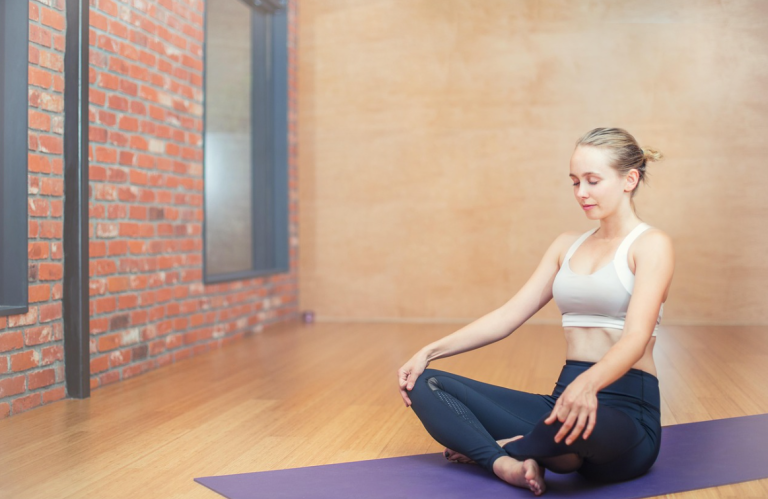
Introduction
When you think of exercise, what comes to mind? Running, lifting weights, or maybe cycling? Walking is often the exercise that gets overlooked despite being one of the simplest, most accessible forms of physical activity. It’s the exercise we do every day without thinking twice about it. But could it be the best form of exercise that you’re not doing? In this article, we’ll explore why walking is not just for those who can’t run—it’s a powerhouse of health benefits that often goes underappreciated.
The Underrated Power of Walking
When was the last time you heard someone rave about their walk? Unlike intense gym sessions or high-energy fitness classes, walking is frequently dismissed as “too easy” or “not a real workout.” But this perception couldn’t be further from the truth. Walking has numerous health benefits that can rival any high-intensity exercise regimen—without the risk of burnout, injury, or feeling worn out.
What Makes Walking Different from Other Exercises?
Low Impact, High Results
One of the most significant advantages of walking is that it’s a low-impact exercise. Unlike running or high-intensity interval training (HIIT), walking doesn’t put strain on your joints, making it ideal for people of all ages and fitness levels. This means fewer injuries, less soreness, and long-term sustainability. While you won’t get the same immediate “afterburn” effect as with intense workouts, the benefits of regular walking compound over time, leading to sustainable fitness.
Ideal for All Fitness Levels
Whether you’re just starting your fitness journey or you’re already a seasoned athlete, walking is an exercise that anyone can enjoy. It requires minimal effort to begin and can easily be scaled up as your fitness level improves. Walking doesn’t demand any special skills, and you don’t need any fancy equipment—just your legs and a path to follow.
Simplicity and Accessibility
It’s hard to argue against the accessibility of walking. You can do it anywhere—on the streets, in parks, around your neighborhood, or even indoors on a treadmill. You don’t need a gym membership, and you certainly don’t need expensive gear. All you need is a comfortable pair of shoes and the will to step outside.
The Health Benefits of Walking
You may be surprised at the many health benefits that walking offers. Walking is more than just a leisurely activity; it’s a full-body workout that strengthens muscles, improves cardiovascular health, and can even enhance your mental well-being.
Cardiovascular Health Boost
Walking is one of the best exercises for improving cardiovascular health. Studies have shown that just 30 minutes of walking per day can significantly reduce your risk of heart disease, lower your blood pressure, and improve circulation. It strengthens the heart by increasing blood flow and promoting the development of new blood vessels, which helps the heart function more efficiently.
Weight Loss and Metabolism Boost
Want to shed a few pounds? Walking can help. While it may not burn as many calories per minute as running, it’s a sustainable exercise that can help you burn fat over time without the risk of injury. Walking also speeds up your metabolism, allowing your body to burn more calories even when you’re at rest. Plus, it’s a great way to build endurance and keep your body moving without taxing your joints.
Mental Health Benefits
In today’s fast-paced world, mental health is just as important as physical health. Fortunately, walking can play a significant role in alleviating stress, improving mood, and reducing anxiety. A brisk walk outdoors, especially in nature, can clear your mind, help you focus, and promote mental clarity.
Stress Reduction and Mental Clarity
Walking helps reduce the stress hormone cortisol in your body while boosting endorphin production, which makes you feel better. This combination can lead to improved emotional well-being, reduced feelings of anxiety, and better overall mental health. Whether you’re facing a tough day at work or dealing with personal challenges, a walk can work wonders for your mental state.
Joint Health and Mobility
Unlike high-impact exercises that can put stress on your knees, hips, and lower back, walking helps maintain joint health by increasing circulation and flexibility. Regular walking helps lubricate the joints, reducing stiffness and enhancing mobility, making it a great exercise for people with arthritis or other joint issues.
Walking vs. Other Popular Exercises
While walking is often underrated, how does it compare to more intense exercises like running or strength training?
Running vs. Walking: A Comparison
Both running and walking are excellent cardiovascular exercises, but they each have their pros and cons. Running can be hard on the joints and requires more effort to maintain speed and endurance. On the other hand, walking is gentler, easier to do for longer periods, and carries a lower risk of injury. While running might give you faster results in the short term, walking is more sustainable in the long run.
Strength Training vs. Walking
Strength training is fantastic for building muscle and improving bone density, but walking can complement strength workouts by enhancing endurance, cardiovascular health, and fat burning. It’s also an excellent way to wind down after a strenuous lifting session, helping to improve recovery and prevent stiffness.
How to Incorporate More Walking into Your Routine
Getting more walking into your life doesn’t require drastic changes. There are simple ways to make walking a regular part of your day.
Simple Tips to Get Started
Start by setting realistic goals—whether that’s taking a 10-minute walk during your lunch break or aiming for a 30-minute stroll after dinner. You don’t need to walk for hours to reap the benefits. Even small steps can make a difference.
Creating a Walking Plan
To stay motivated, it helps to create a walking plan that fits into your schedule. Whether you prefer early morning walks, lunchtime strolls, or evening outings, consistency is key. The more regularly you walk, the more benefits you’ll experience.
Setting Realistic Goals
As with any new habit, it’s important to set achievable goals. Start with short, manageable walks and increase your time and distance as you feel more comfortable. The goal is to build consistency, not to overexert yourself.

Common Myths About Walking
Despite its benefits, there are several myths that hold people back from walking more. Let’s debunk a few.
“Walking Isn’t Enough to Get Fit”
Many people believe that walking alone isn’t enough to get fit, but this simply isn’t true. While walking may not build the same muscle mass as weightlifting, it improves cardiovascular health, burns fat, and supports long-term wellness, making it a vital part of any fitness regimen.
“Walking Is Too Slow for Weight Loss”
Some think that walking doesn’t burn enough calories to help with weight loss. However, this myth fails to acknowledge that walking can increase metabolism, and when paired with a balanced diet, it can effectively contribute to fat loss over time.
Conclusion
Walking may seem simple, but its health benefits are anything but basic. From improving cardiovascular health and aiding weight loss to enhancing mental clarity and joint mobility, walking is an accessible, sustainable, and effective form of exercise. The best part? You don’t need a gym membership or fancy equipment to get started. So, why not lace up your shoes and take the first step towards better health today?

FAQs
- How long should I walk for health benefits?
Aiming for at least 30 minutes of walking most days of the week is ideal for reaping cardiovascular and overall health benefits. - Can walking replace other forms of exercise?
While walking is a great exercise for overall health, combining it with strength training or other forms of exercise will offer a more balanced fitness routine. - How fast should I walk to lose weight?
A brisk pace, around 3-4 miles per hour, is ideal for weight loss. However, consistency over time is the key to success. - Is walking good for mental health?
Yes! Walking has been shown to reduce stress, improve mood, and promote mental clarity, making it excellent for mental well-being. - Can walking help with joint pain?
Walking is a low-impact exercise that can help improve joint flexibility, reduce stiffness, and alleviate joint pain over time.





